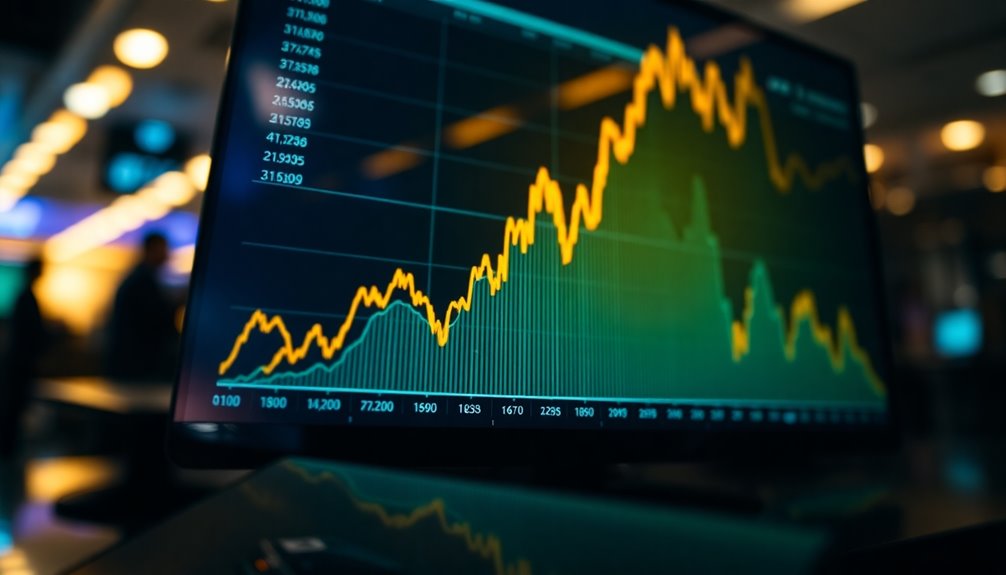You've likely noticed the recent spike in Bitcoin open interest, hitting an all-time high of $19.8 billion. This surge signals a significant influx of new positions from traders, pointing to a bullish outlook in the derivatives market. As open interest climbs, it can lead to increased liquidity and potential price fluctuations. But what does this mean for your trading strategy and the overall market dynamics? Let's explore the implications further.

Bitcoin's open interest numbers provide valuable insights into the cryptocurrency market, reflecting the total number of outstanding derivative contracts that haven't been settled. When you look at these numbers, they tell you a lot about market sentiment and the current trading environment. Open interest, or OI, increases when more contracts are opened than closed, while it decreases when the opposite happens. This dynamic can help you gauge whether traders are feeling bullish or bearish.
Recently, Bitcoin's open interest hit a record high of $19.8 billion, indicating a surge in activity within derivatives. This spike often signals bullish sentiment among traders, with many of them holding long positions. When you see high OI levels, it's likely that traders are optimistic about Bitcoin's future price movements. Additionally, positive funding rates suggest that traders are willing to pay premiums to maintain these long positions, further reinforcing this bullish outlook. Open interest serves as a barometer for market activity and liquidity, helping traders assess the strength of ongoing trends.
However, it's essential to recognize that elevated open interest can lead to increased market volatility. Because many positions are leveraged, any significant market movements can trigger sharp reactions, amplifying price fluctuations. As a trader, understanding this relationship can help you prepare for potential volatility.
Rising OI also correlates with growing liquidity in the crypto market, meaning there's more participation from various market players. This increased liquidity can contribute to more stable price movements, at least in the short term.
Changes in open interest can act as indicators for possible price movements. If OI is rising, it often confirms that the current trend is gaining strength, while falling OI might suggest a weakening trend. You should pay attention to these indicators to make informed trading decisions.
Furthermore, as demand for Bitcoin increases, reflected in rising OI, it plays a critical role in pushing prices higher. The inflow of funds into Bitcoin ETFs also signals growing demand, which can further support price increases.
As you analyze market trends, consider using tools like the Commitment of Traders report, which provides insights into OI by different trader categories. This information can help you understand market dynamics better.










